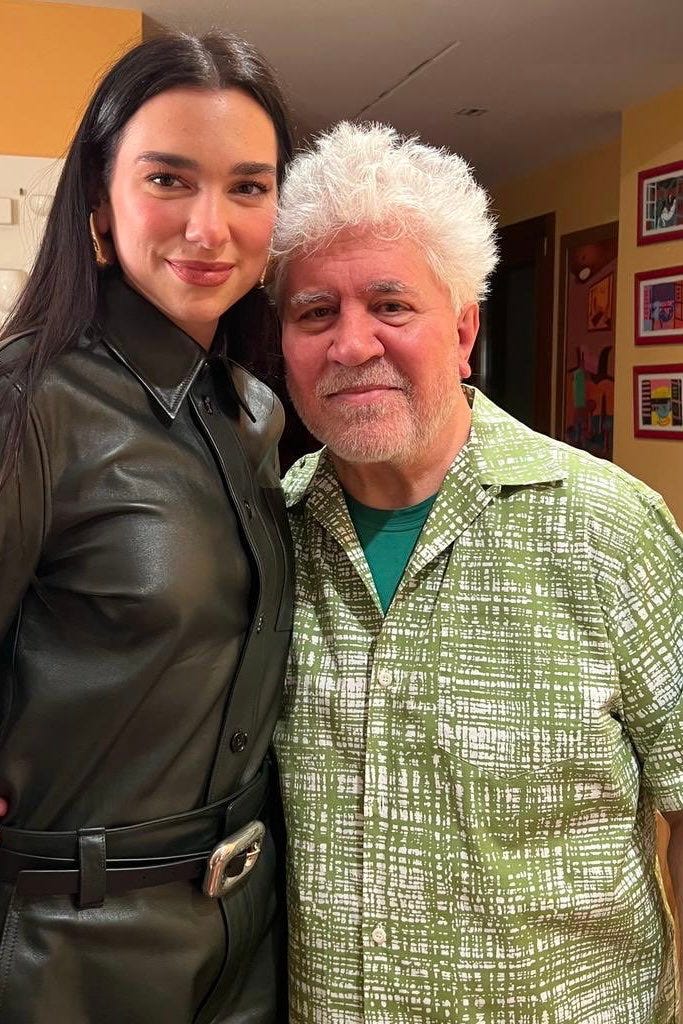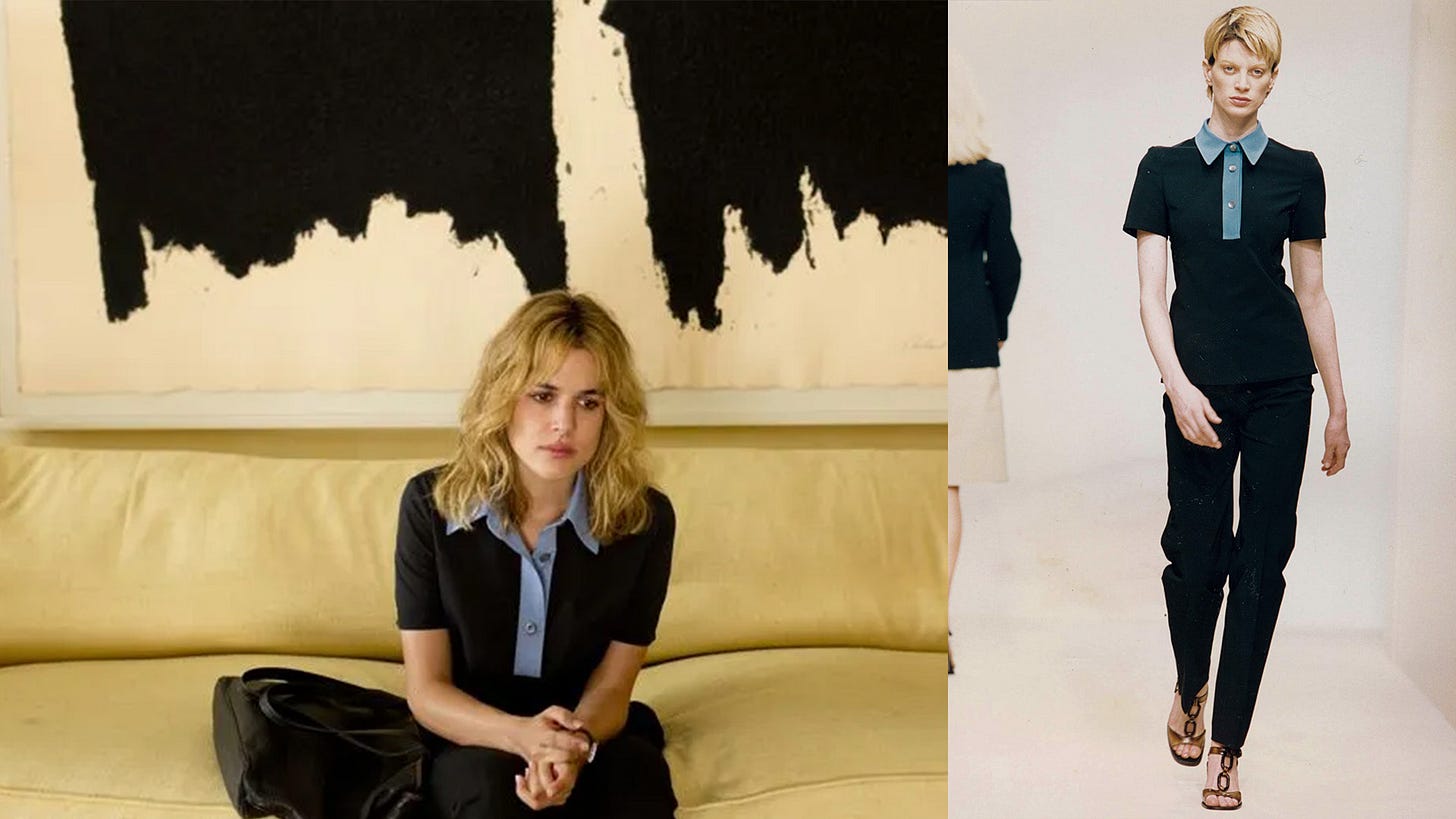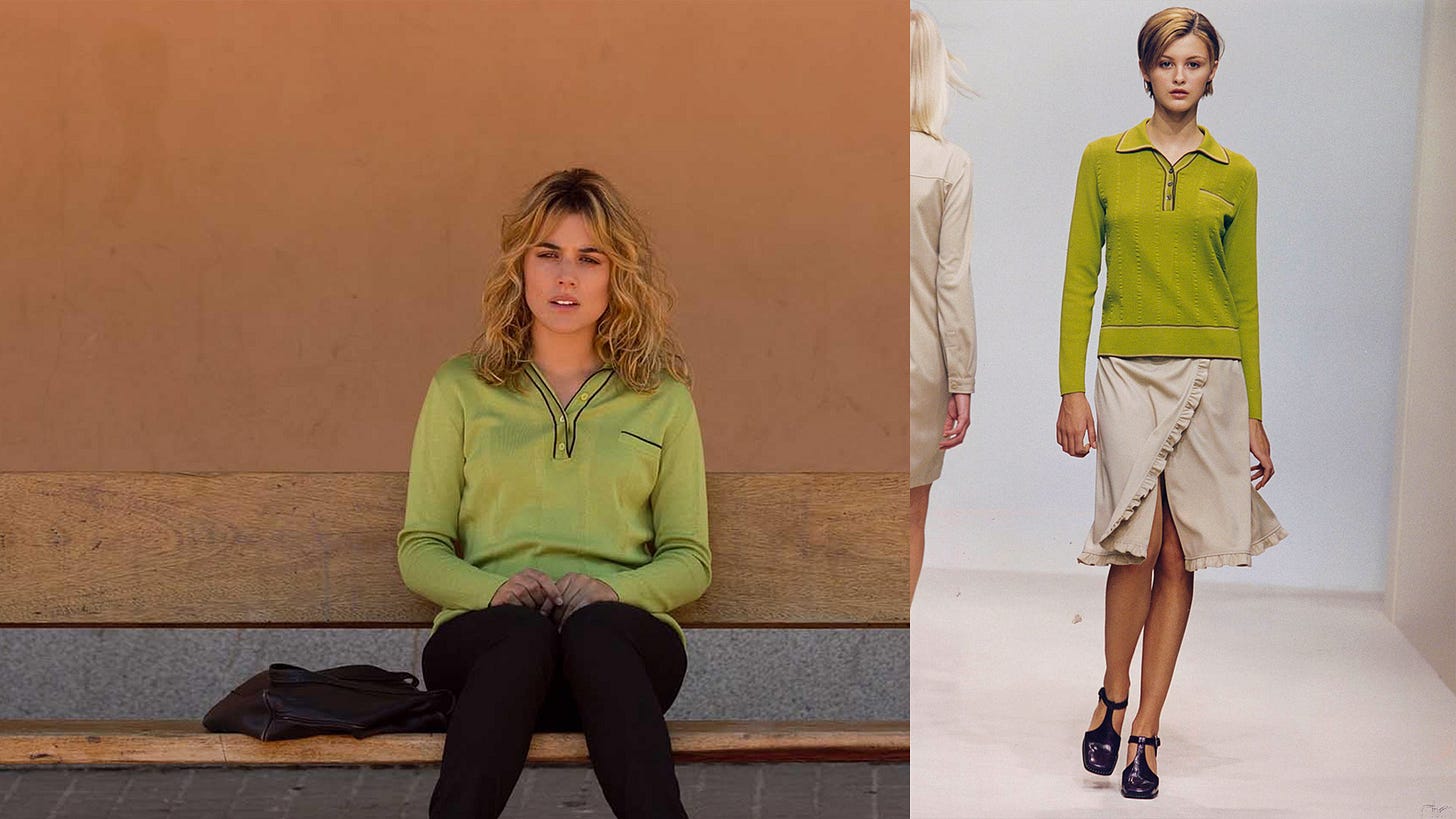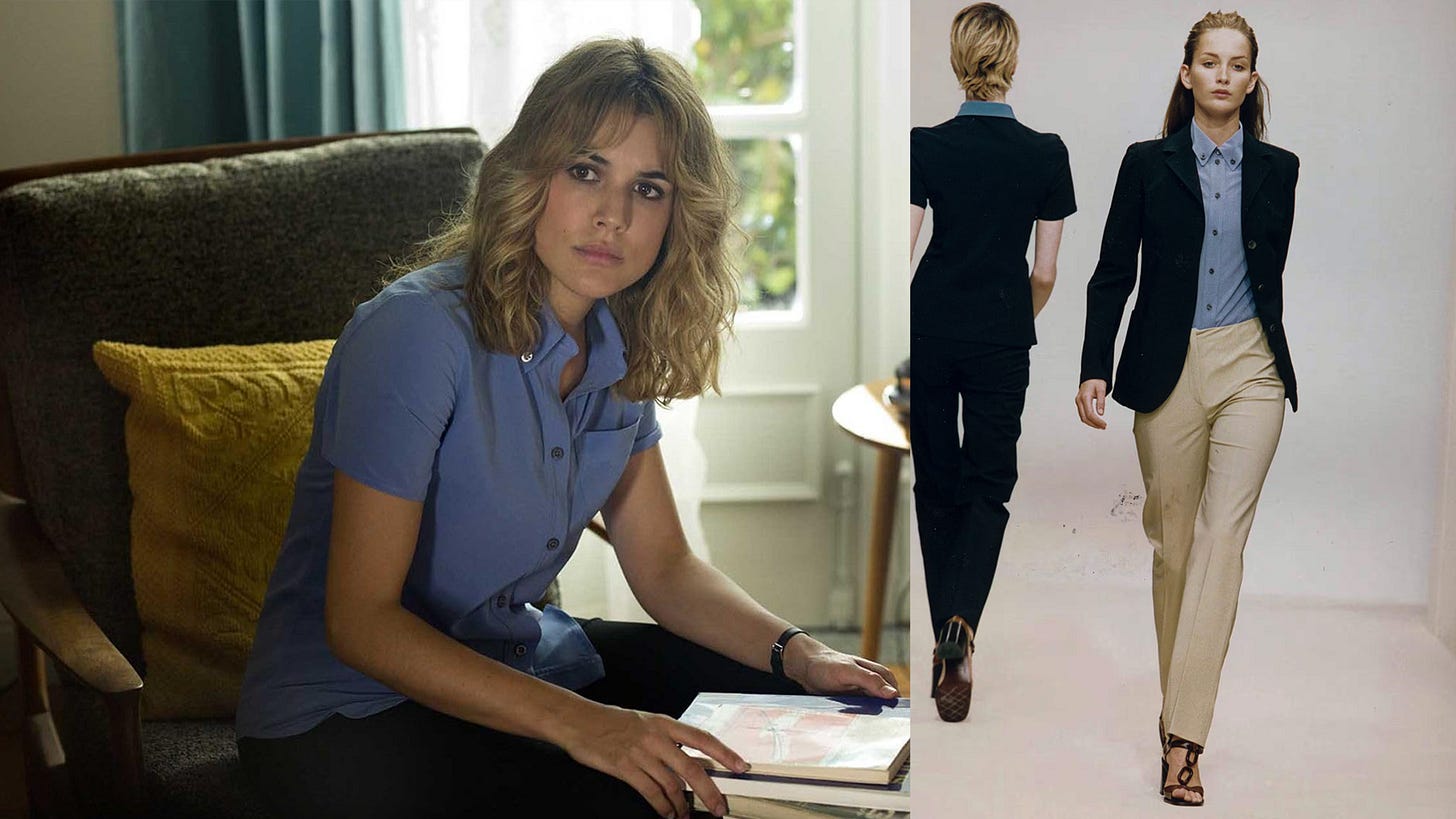Julieta (2016) - a must-watch for every fashion lover
only Pedro Almodóvar can dress his character, a stay-at-home mother, in half of Prada's iconic Ugly Chic collection
Saturday evening rolls around, and a decision looms: head to the cinema to see MaXXXine (I’m obsessed with Mia Goth, though horror films aren't my cup of tea) or stay in and finally watch something from the ever-growing ‘Up Next’ list. This list has become almost cursed—anything added rarely gets watched. For years, titles like Gomorrah (too violent), River's Edge (how did this even make it onto the list!?), Dogtooth (not today), The Neon Demon (I’m not in the mood), and Julieta, one of the few Pedro Almodóvar films I still haven’t seen, have languished there. Ultimately, the choice falls on staying in and watching Julieta (2016). Going into this film, I anticipated experiencing a complex mother-daughter relationship, strong female characters, a kitsch aesthetic, and the captivating presence of Rossy de Palma. But what I saw exceeded my wildest expectation: a main character casually dressed in half of Prada's groundbreaking Spring-Summer 1996 collection.
Prada's Spring-Summer 1996 collection, also known as the Ugly Chic collection, was a bold break from the glamorous fashion trends of the mid-1990s. At a time when fashion was dominated by Versace's opulence, Tom Ford's sexy sophistication at Gucci, and Giorgio Armani's sleek minimalism, Miuccia Prada dared to challenge conventional ideas of beauty. She took inspiration from what was considered bad taste, using kitschy prints and colors reminiscent of 1950s domestic textiles.
In the catalog for the MET exhibition Schiaparelli & Prada: Impossible Conversations, Miuccia Prada writes:
My spring 1996 collection was an exercise in elevating cheap and obsolete patterns into high fashion. The patterns recalled trashy domestic textiles from the 1950s, textiles that were used for curtains and tablecloths in suburban homes. [...] Bad taste is part of our history, part of our culture. But it’s scorned in the fashion industry. Sometimes, fashion focuses on fixed, narrow, and limited notions of beauty, luxury, and glamour. My spring 1996 collection attempted to upend these prescribed concepts.
The collection shocked many, with supermodels walking the runway in boxy skirts, stiff tweed jackets, and sweaters—all in unpopular colors like brat green (formerly known as chartreuse), brown, and purple. Prada's goal was to make ugly appealing by deconstructing traditional notions of beauty and glamour in fashion.
Incorporating costumes from this specific Prada collection into an Almodóvar movie is a brilliant move, in my opinion. Known for blending popular culture with high art, Almodóvar crafts a distinctive visual language that is both playful and subversive. His films are characterized by not only melodramatic storytelling but also bold colors and a healthy dose of kitsch and camp, which perfectly align with Prada’s Ugly Chic collection. Not to mention him being the face of Prada's f/w 2017 collection.
The plot of Julieta (2016) is quite simple. Julieta, a middle-aged woman, appears to be content with her life, but an unexpected encounter with her daughter's former friend brings back a flood of painful memories. This meeting forces her to face the reality that she has not had any contact with her only daughter, Antia, for the last 12 years after her daughter cut all ties. In her desperation, Julieta decides to write a letter to Antia, recounting the story of her life and the events that led to their estrangement.
The movie spans 30 years, using fashion as a key indicator of time and Julieta's personal growth. In the 1980s, young Julieta wears mohair turtlenecks and tweed skirts, capturing the style of the time. As she becomes a young mother, her style softens and becomes more casual. By the time her daughter reaches primary school, Julieta’s wardrobe shifts again, and this is when she wears so many iconic Prada pieces. Even without clear time skips, the costumes help the audience understand the passage of time and Julieta’s life changes. The shift to Prada's Spring 1996 collection symbolizes a major turning point in Julieta's life, marking a dramatic and irreversible transformation. As the film progresses, her style becomes even more refined, symbolizing her detachment from her emotions and her past.

Ultimately, Julieta (2016) isn't just about fashion, although Prada’s Spring 1996 collection might be the hook that initially grabs you. The film is a deeply moving exploration of grief, guilt, and the passage of time, all cleverly signaled through Julieta’s evolving wardrobe. I almost let this one sit on my ‘Up Next’ list for too long, but don’t make the same mistake. Watching it is like peeling back layers of emotional complexity, and trust me, it’s worth every minute.
Thank you so much for reading! Let me know if you’ve seen this film.
Kasia xx









Can we collaborate?https://open.substack.com/pub/yanpan0508/p/my-ultimate-birthday-wish-a-self?r=ad7en&utm_medium=ios